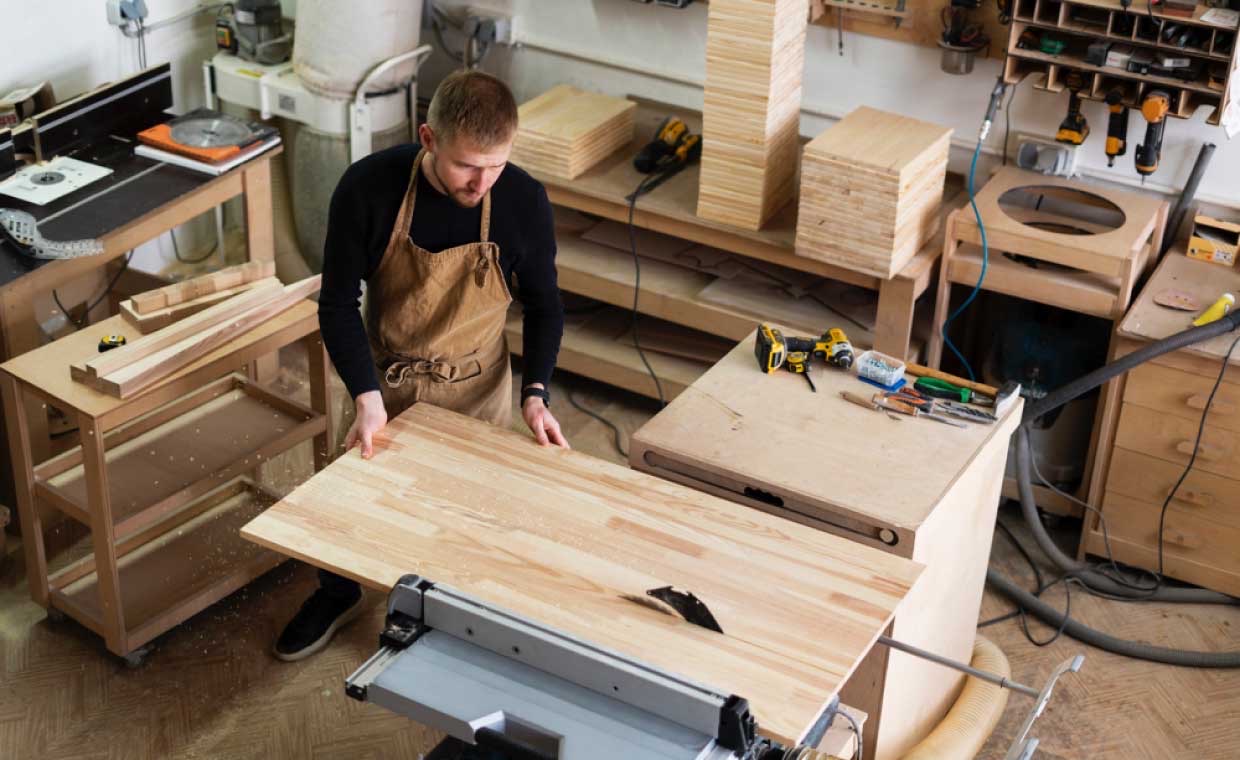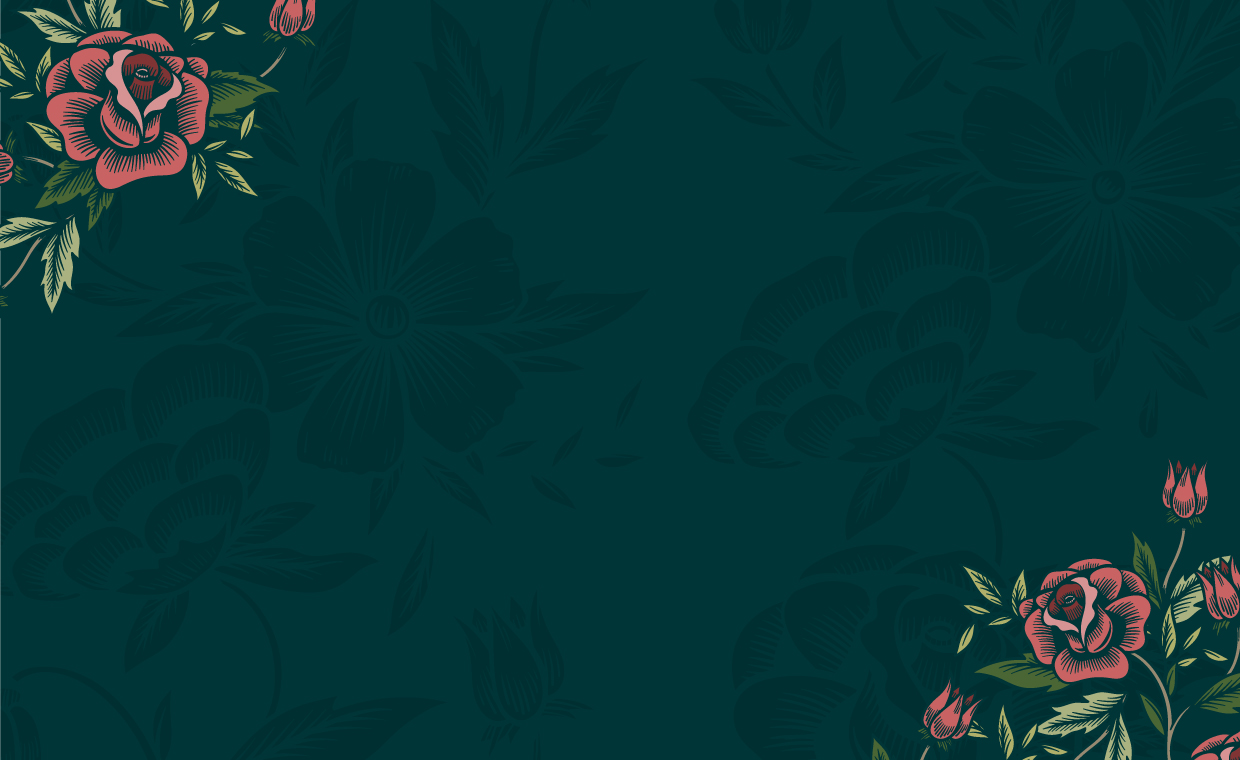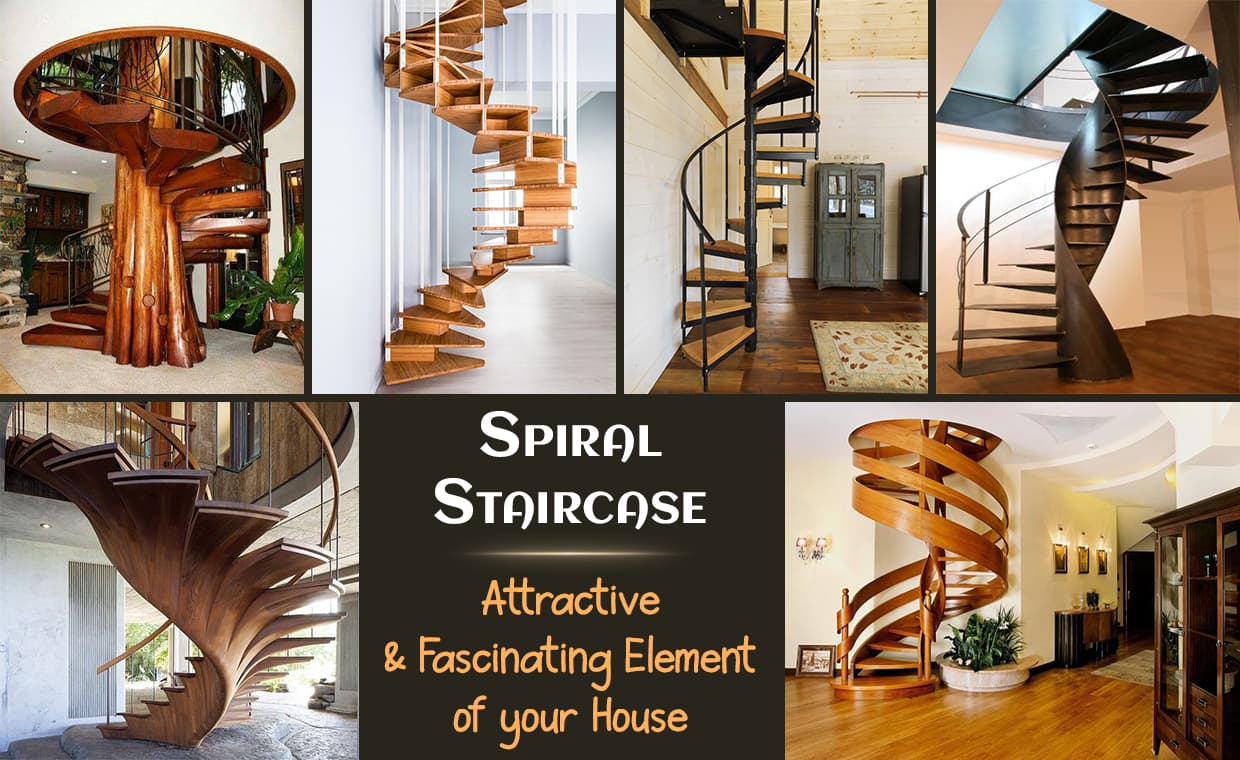
A staircase is a building component that connects various floors vertically via a series of steps. There are various types of stairs that are classified depending on their design, shape, functional use, and construction materials. In this article, we focus on a type of staircase known as the spiral staircase as it is considered to be one of the most eye-catching staircases.
What is a Spiral Staircase?
A spiral staircase is a type of staircase where a series of steps winds around a central column or a central post. The width of the tread in this type of staircase gets wider the further away it gets from the central pole, while its depth remains equal and uniform throughout. The handrails and railings run along the perimeter of the curve formed by the series of steps. For your better understanding, just take a look at the spiral staircase design through its plan and elevation.

As attractive as they are, spiral staircases are not suitable in certain situations, like where:
01. There is heavy traffic.
02. There is traffic in both directions i.e. upwards and downwards.
03. There is movement of heavy goods, materials, and bulky or heavy objects.
Where Can Spiral Staircases Be Used?
Spiral staircases can be used indoors, as well as outdoors in the following circumstances:
01. Where there is an extreme constraint of space, particularly for normal single/double flight staircase.
02. When the traffic is low and there is no movement of goods or bulky materials.
03. When the spaces are very costly i.e. real estate rates are so high that you have to save every inch of space, particularly in commercial establishments.
04. When there is a need for an additional staircase.
05. To connect two floors only, and not as a continuous connection of multiple floors.Let’s have a look at a few examples of indoor and outdoor spiral staircases to clear any lingering doubts.
01. Indoor Spiral Staircase
An indoor spiral staircase can be used to connect two floors internally, like a connection with the mezzanine floor, or if you have to fit your staircase in a small space. Materials that are typically used for indoor spiral staircases are wood and metal, like stainless steel and aluminium.
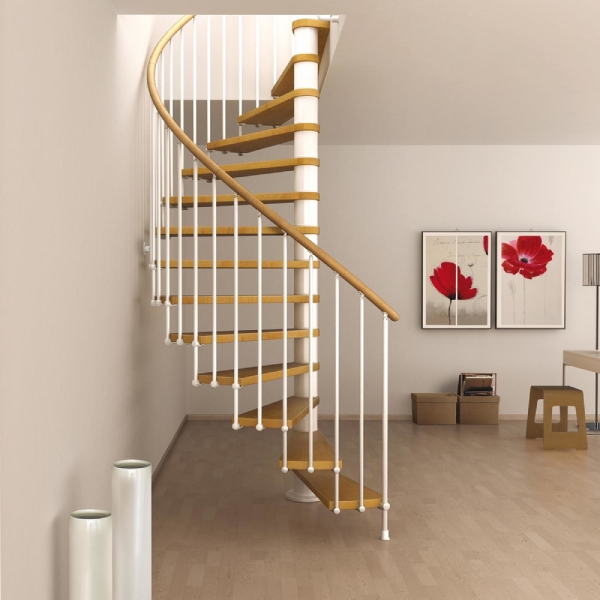
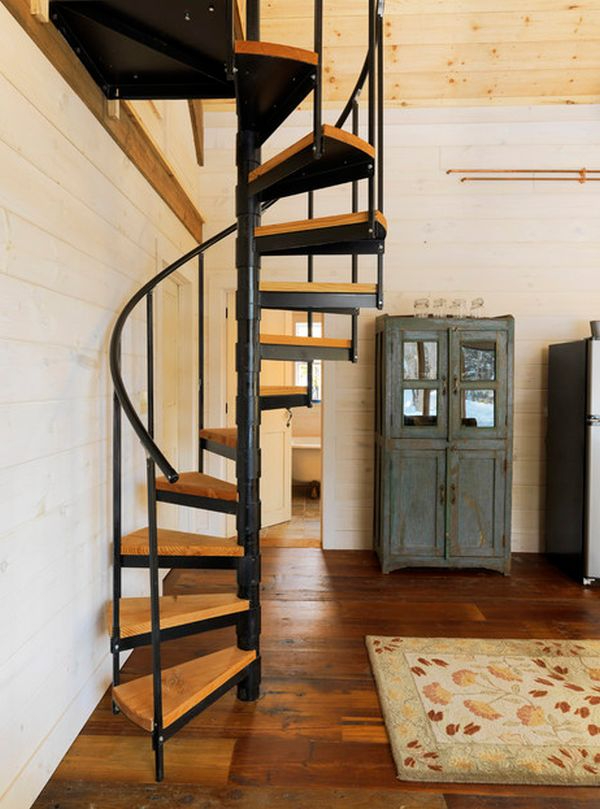
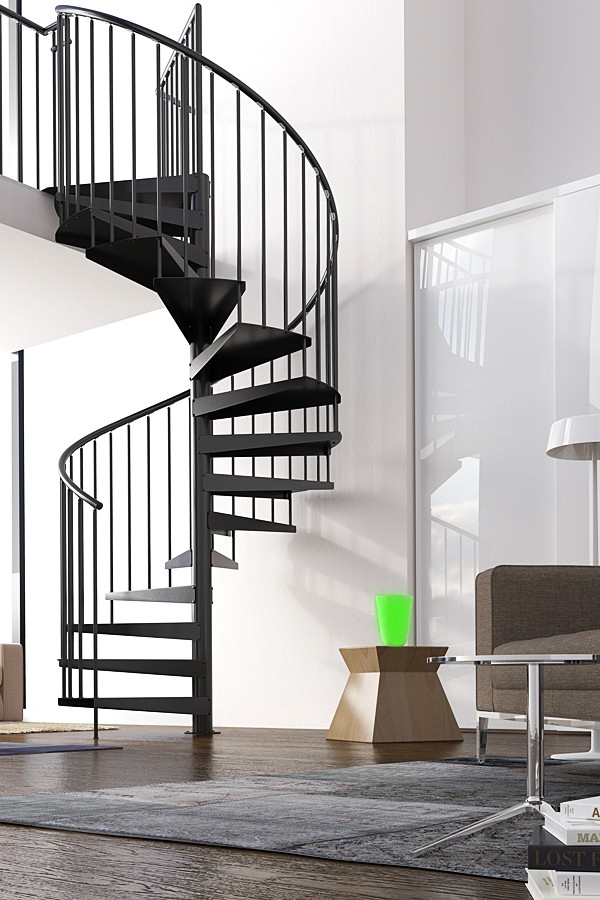
02. Outdoor Spiral Staircase
An outdoor spiral staircase is used to connect terraces, shops, or offices on the first floor with the ground for direct access. The best construction material for outdoor spiral staircases is galvanized steel or powder coated aluminum, as these stairs are fully exposed to the environment.
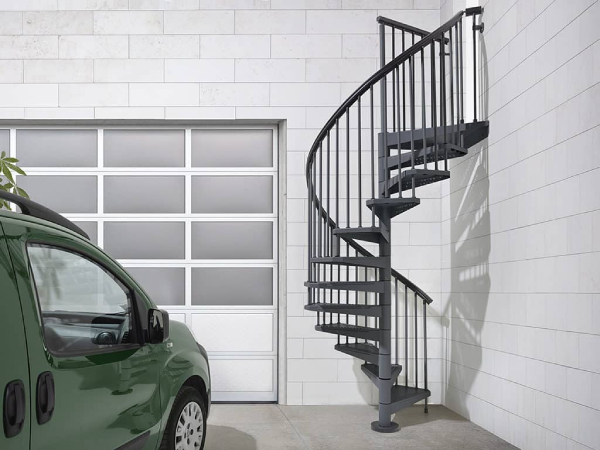

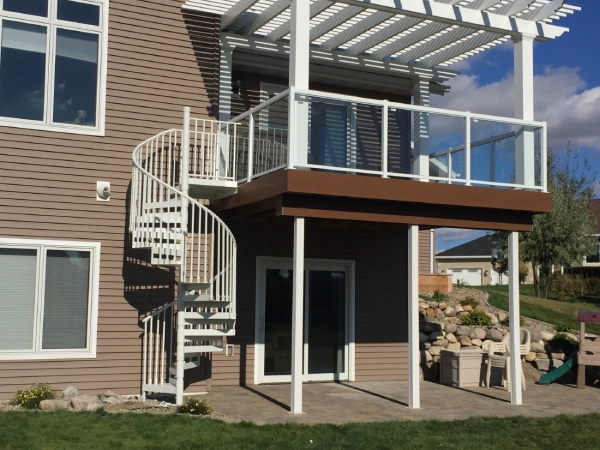
Types of Spiral Staircase
01. Wooden Spiral Staircase
Wooden Spiral Staircases are considered to be one of the best alternatives when it comes to indoor spiral staircases. It can be constructed from only one material i.e. wood, or by combination two materials-wood and metal.
The various wooden species that can be used in the construction of a spiral staircase are:











a) Oak Spiral Staircase:
Oak is the most commonly used type of wood for the construction of stairs. This wood is most popular for making the treads and handrails of stairs. Oak is easy to stain, sand, and finish. These trees are mostly found in various parts of America, Asia, Europe, and North Africa.
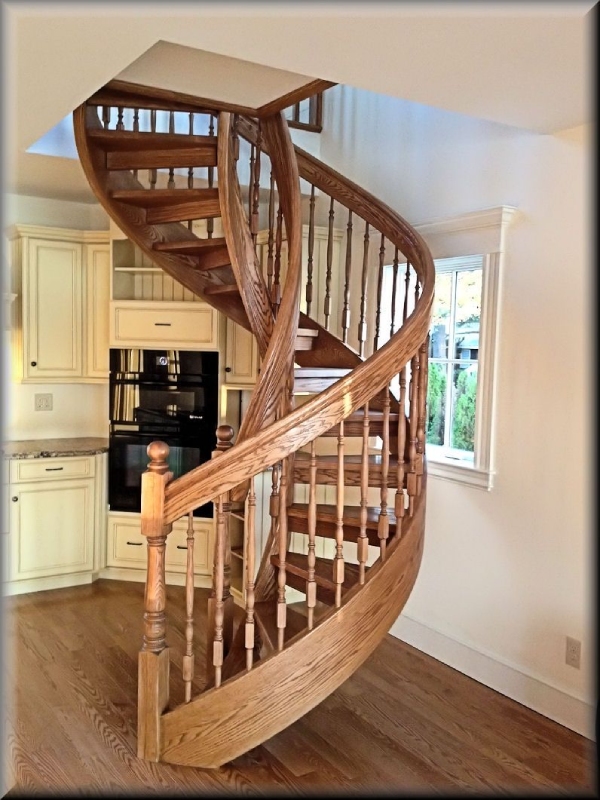
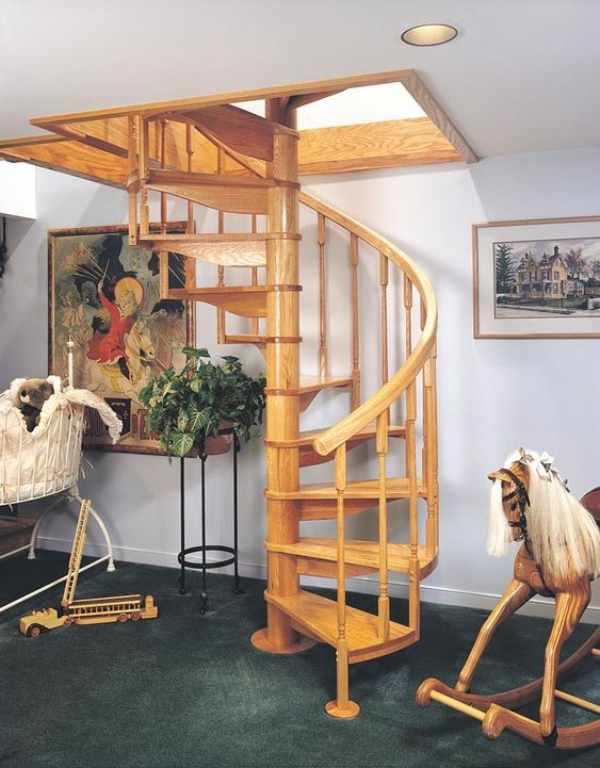
If you are willing to know more about oak wood, you can refer to our
b) African Mahogany Spiral Staircase:
African mahogany is one of the finest types of wood used to make stair components. It is light in weight and thus, is easy to turn and shapes. These trees are often found in the western tropical part of Africa, and today, is also found all over India, particularly in Corbett National Park, Thattekad Wildlife Sanctuary, and Kaziranga National Park.
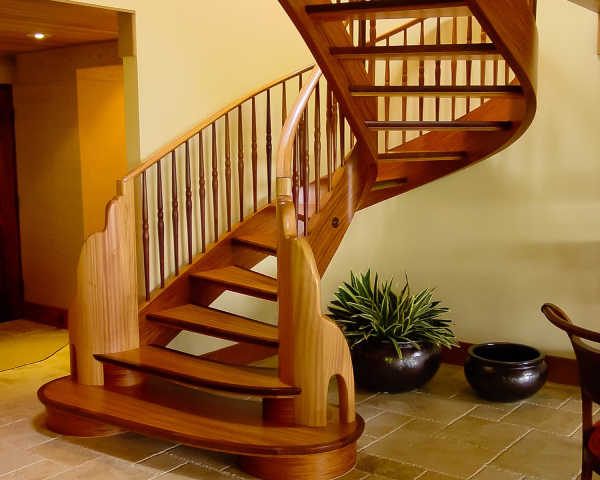
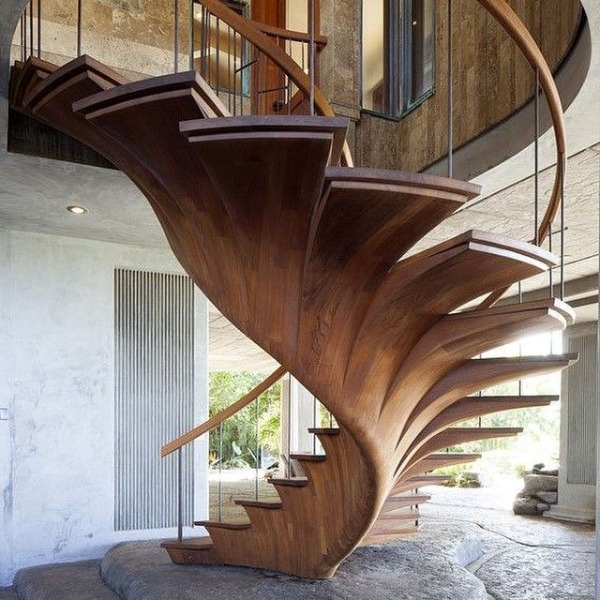
c) Ash Spiral Staircase:
Ash has a closed grain pattern. If we use ash to make various stair parts, we can save a big chunk of money, but making stair components is quite challenging. These trees are generally found in the northeastern part of the United States and eastern Canada.

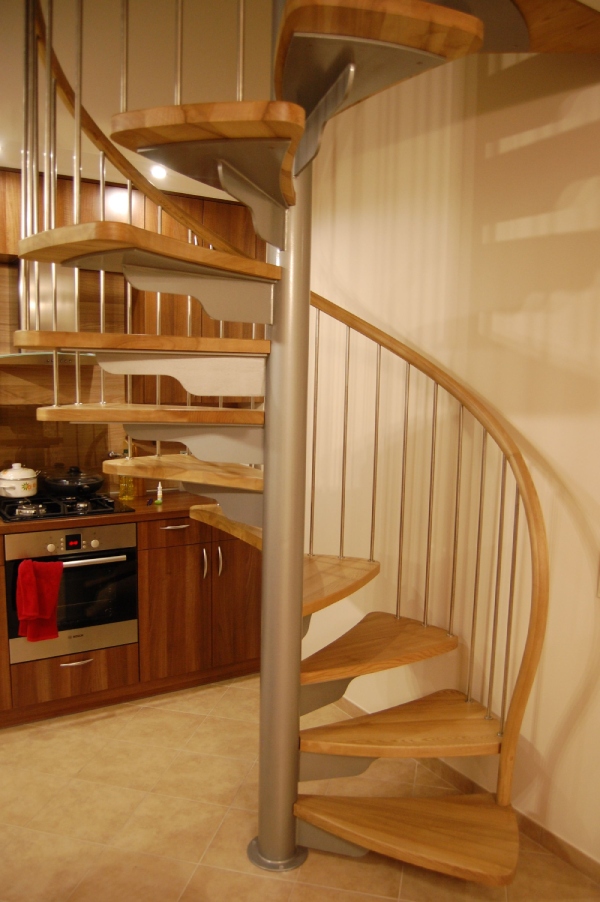
d) Cypress Spiral Staircase:
Cypress is fine-grained; light in weight and it can hold paint for the longer time and can be finished nicely. These trees are typically found in the southeastern part of the United States.
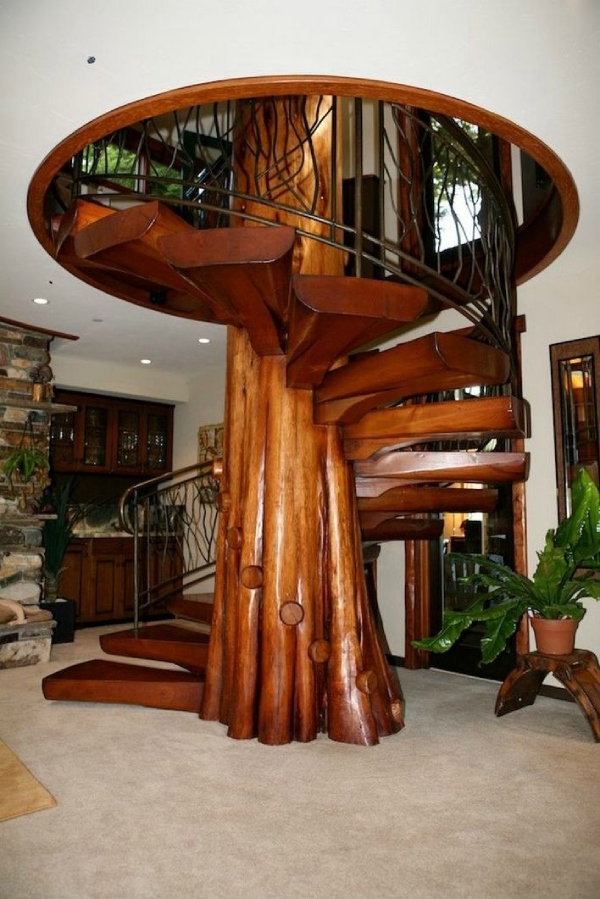
e) Cherry Spiral Staircase:
Cherry is a softer, but sturdy wood used to make long-lasting components for stairs. These trees are mostly found in Europe, eastern parts of North America, and Asia. In India, you can find these trees in the hilly regions of Uttar Pradesh, Kashmir, and Himachal Pradesh.


f) Pine Spiral Staircase:
Pine is one of the most common types of softwood that is used for in the making of stair components. It usually comes in golden yellow or whitish color with brown knots. Pine wood is light in weight, inexpensive, and can be worked and finished very fast. These trees grow in most parts of the northern hemisphere. In India, you can find pine trees in Assam, Nagpur, and the western part of the Himalayas.

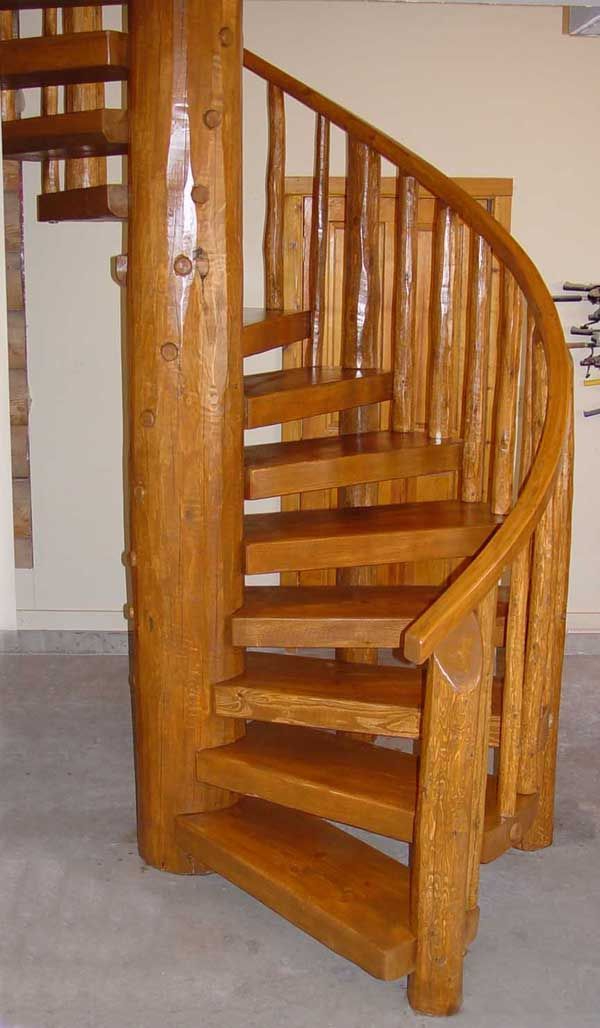
For more information on pinewood, read our article
g) Maple Spiral Staircase:
Maple is a sturdy wood with a natural light color and has a consistent limited grain pattern. It can be stained with almost any colour. These trees are found in Asia, Europe, North Africa, North America, and Canada.


h) Walnut Spiral Staircase:
Walnut is a beautiful, hard, strong wood that has a diverse grain pattern and clear finish. These trees are mostly found in the eastern part of the United States, Asia, and Europe. In India, you can find these trees in Himachal Pradesh, Uttar Pradesh, and Kashmir.
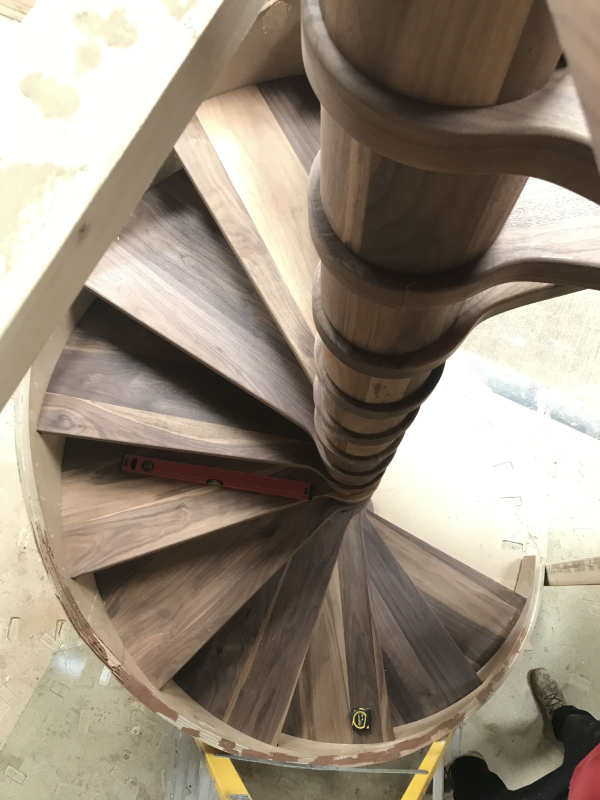
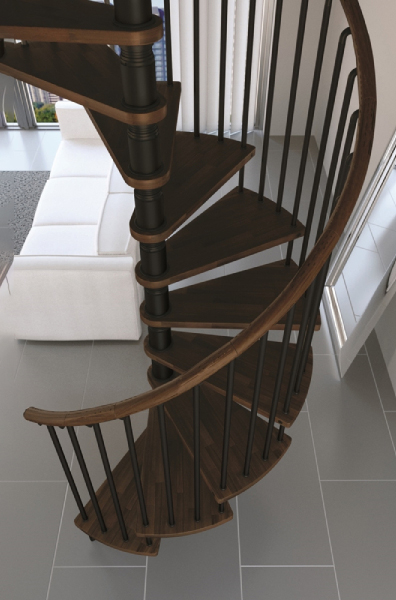
i) Birch Spiral Staircase:
Birch is like Maple in color and can be finished well. Birch is hard, strong, and resists shrinking and wrapping. These trees are mostly found in Europe, North America, and Asia.
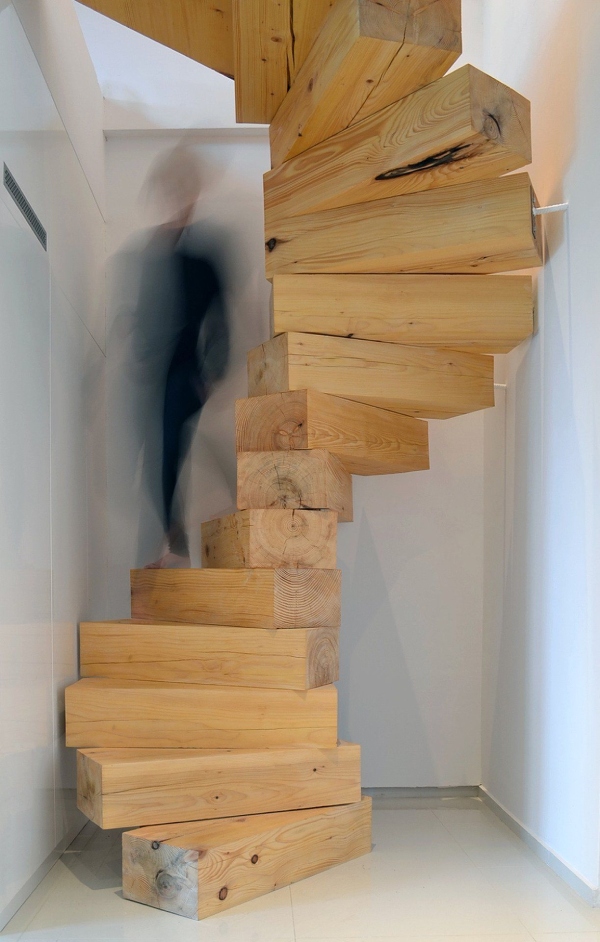
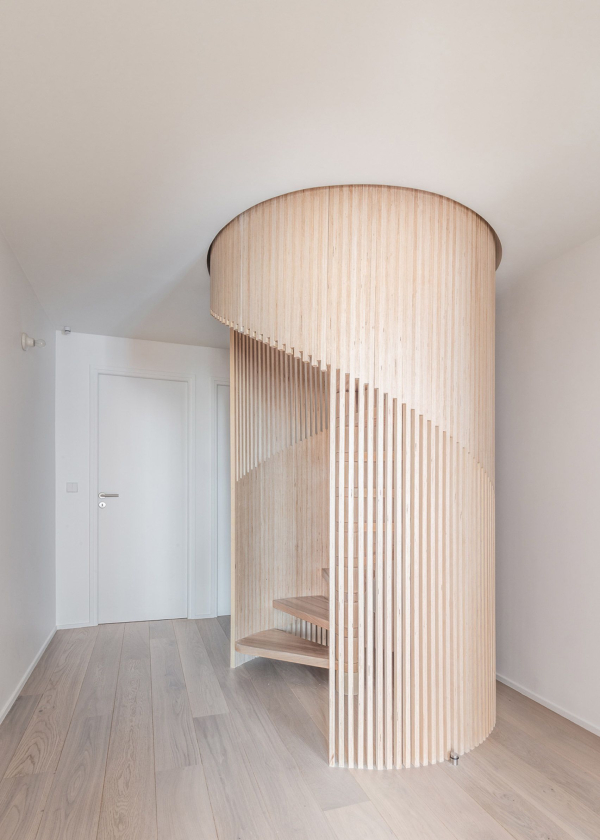
j) Hickory Spiral Staircase:
Hickory is a strong wood that is used for the manufacture of star components. It has sharp dark and light contrasting colors and is famous for its unique look. These trees are mostly found in Asia and North America.

k) Teak Spiral Staircase:
Teakwood is one of the most popular types of hardwood that is in the making of stair components. Teak wood is yellow to brown in colour, strong, heavy, durable, and weather resistant. These trees are considered native to Southern Asia, and are also some of the most preferred types of wood for furniture making and as structural wood.

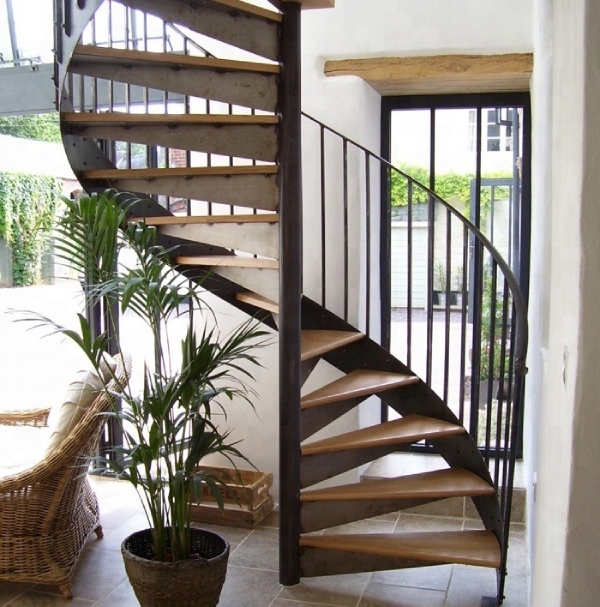
The aforementioned species of wood are mostly used for wooden spiral stair construction as they hold the qualities required for a long service life and climatic survival. Let us now have a look at some wooden stair designs.
Various Trendy Patterns of Wooden Spiral Staircase:
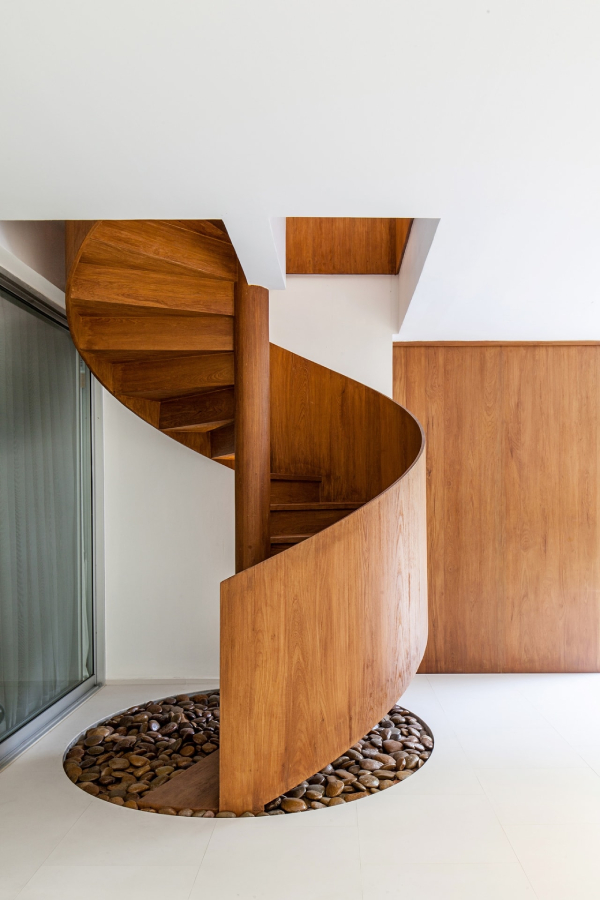
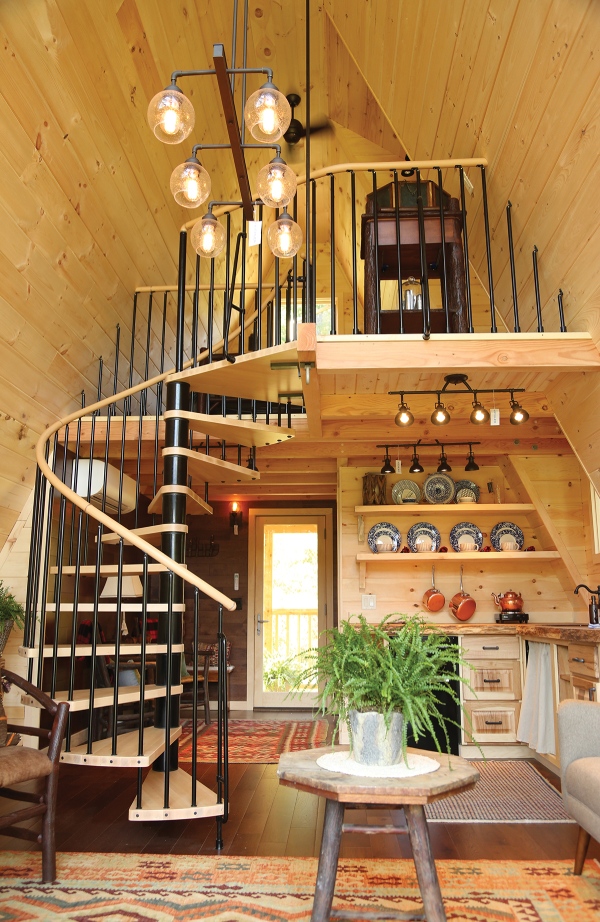
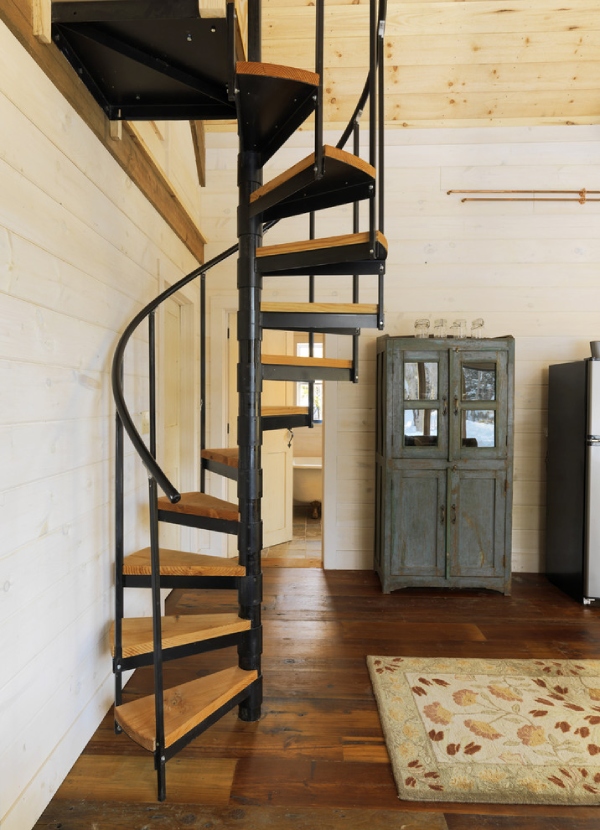
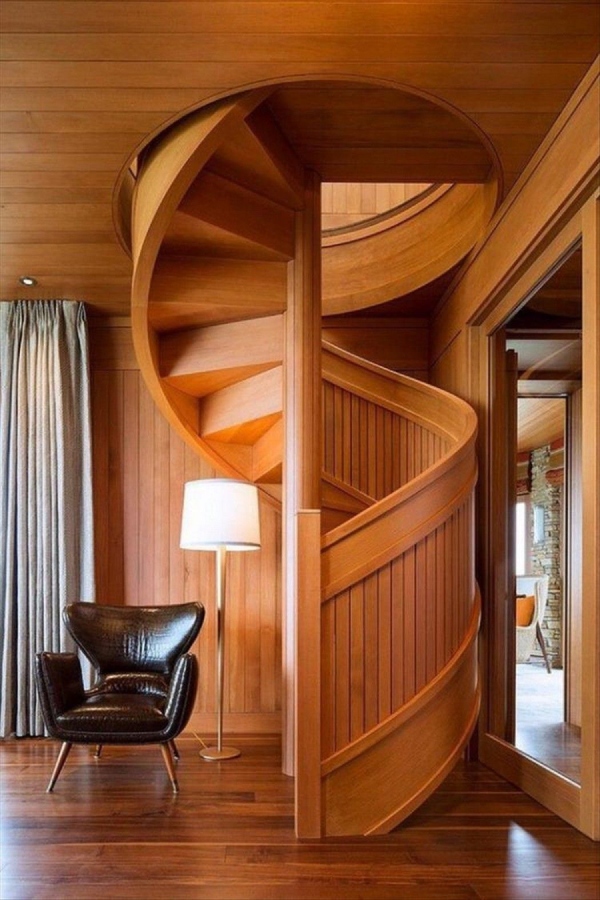
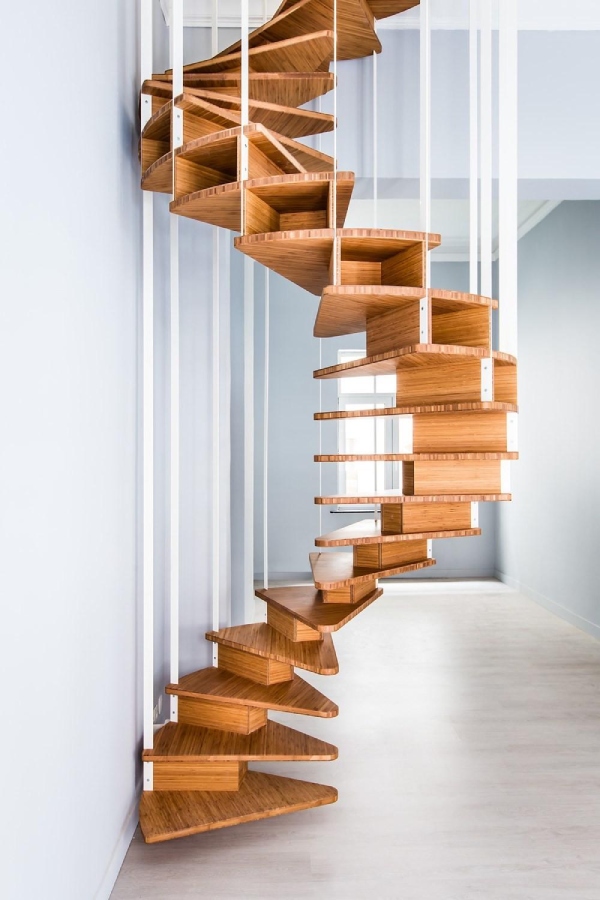

02. Metal Spiral Staircase
Metal Spiral Staircases are considered to be best suited for the outdoors. It can be constructed from the only material- metal, or by combining two materials-wood and metal. The various metals that can be used in the construction of a spiral staircase are:
a) Steel Spiral Staircase:
Steel is the most widely used metal in the construction industry because it is tremendously strong, highly durable, and has the added benefit of being rust-resistant. Steel is also considered an ideal metal for the fabrication of spiral stairs because it is malleable ,i.e. it can be bent and shaped without losing its strength.

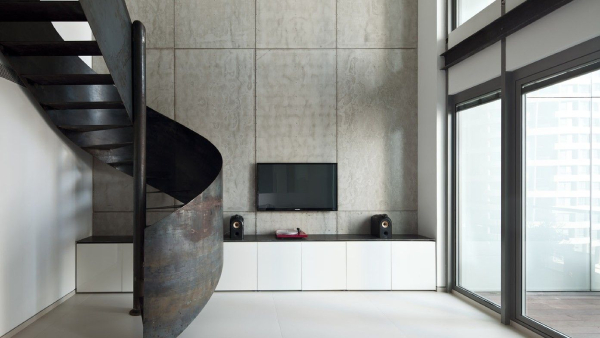
b) Aluminum Spiral Staircase:
Aluminum is a light-weight, anti-corrosive, and affordable metal used in the fabrication of stairs. Aluminum is a good metal for spiral metal stairs, however, it is more brittle than steel as it does not absorb vibrations as well as steel does. Aluminum is more likely to break under high pressure.


c) Iron Spiral Staircase:
Iron is considered an ideal metal for indoor as well as outdoor spiral staircases. It can be made into various types of treads, handrails and railing options. Iron spiral staircases, when combined with wooden components, make the stairs look more elegant and attractive.
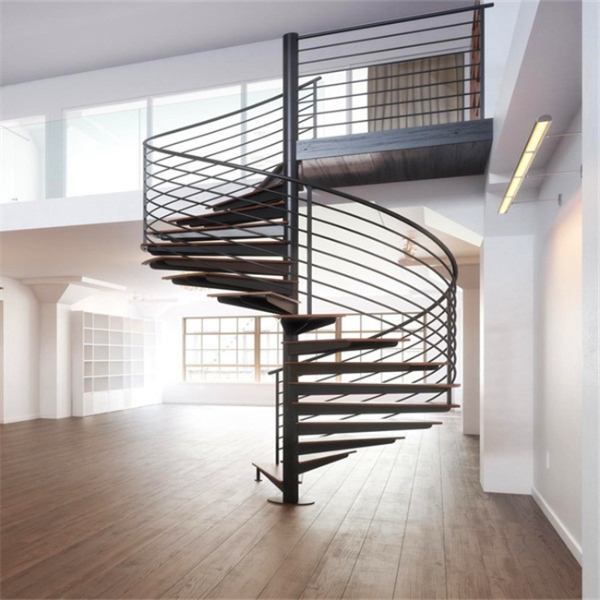

Let us now have a look at some metal staircase designs.
Various Trendy Patterns of Metal Spiral Staircase:
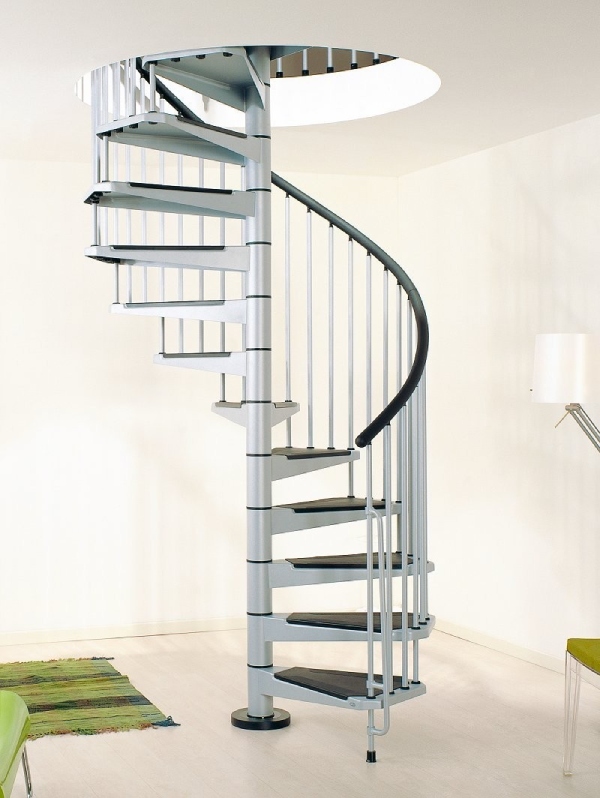


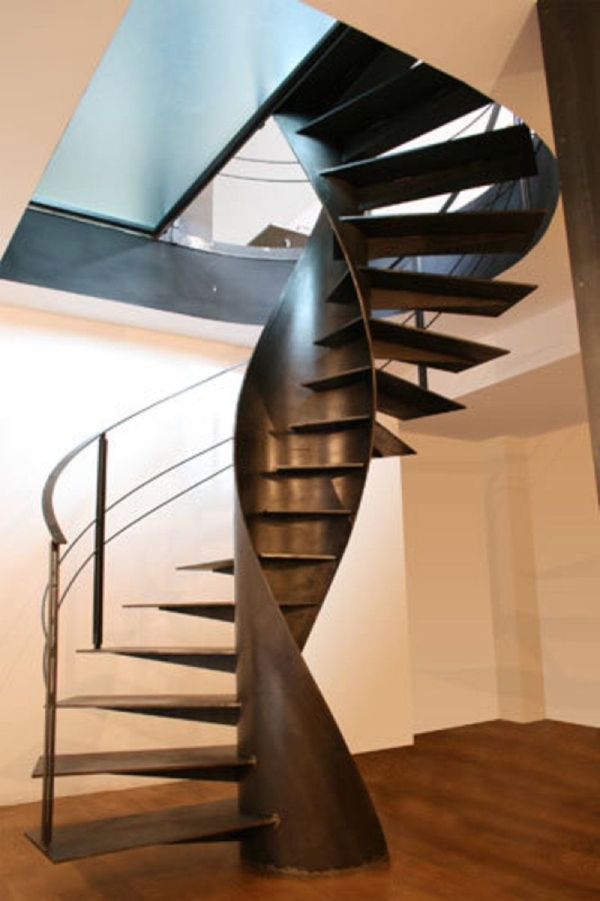

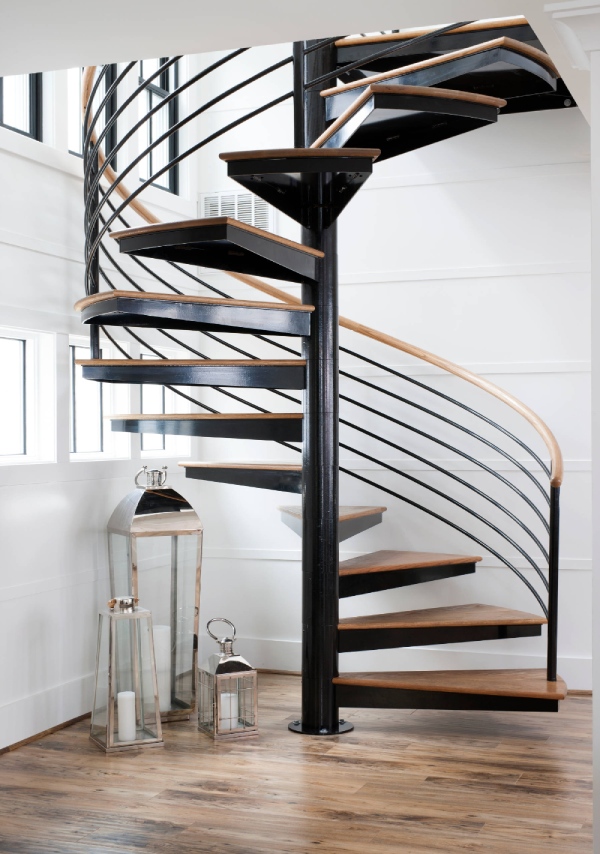
03. Designer Spiral Staircase
Custom designed spiral staircases are the types that are custom-made as per your choice of design and material. Below are some custom designed spiral staircases.
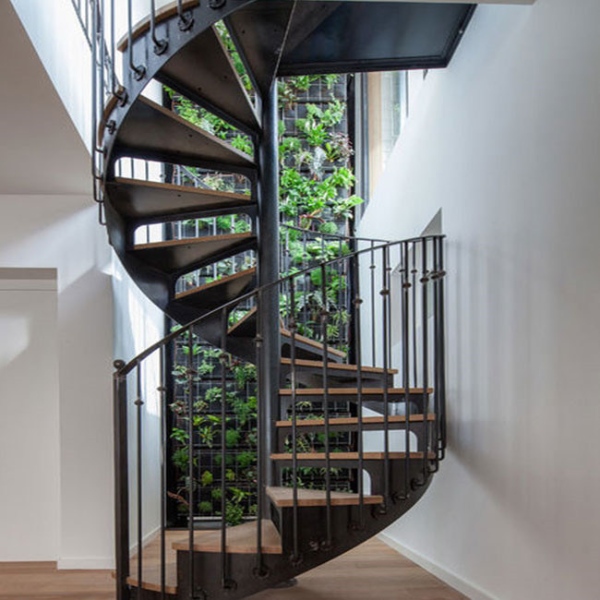
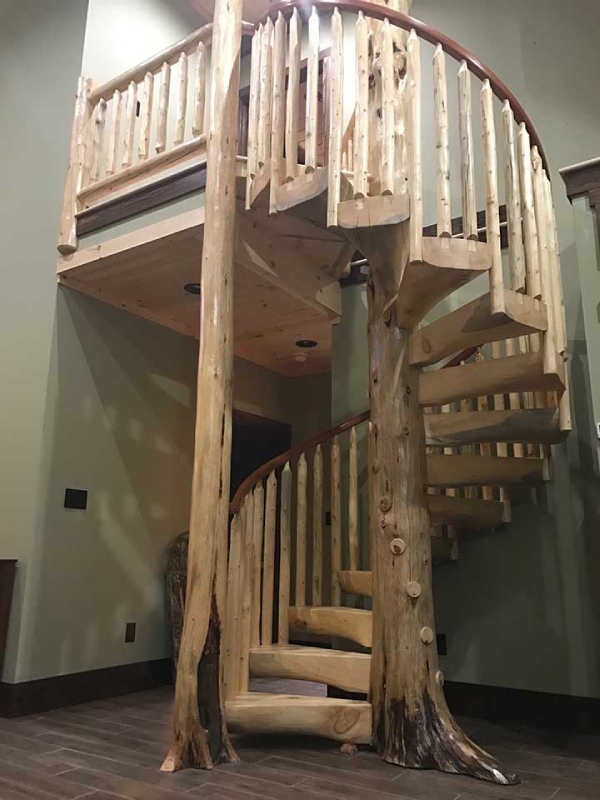
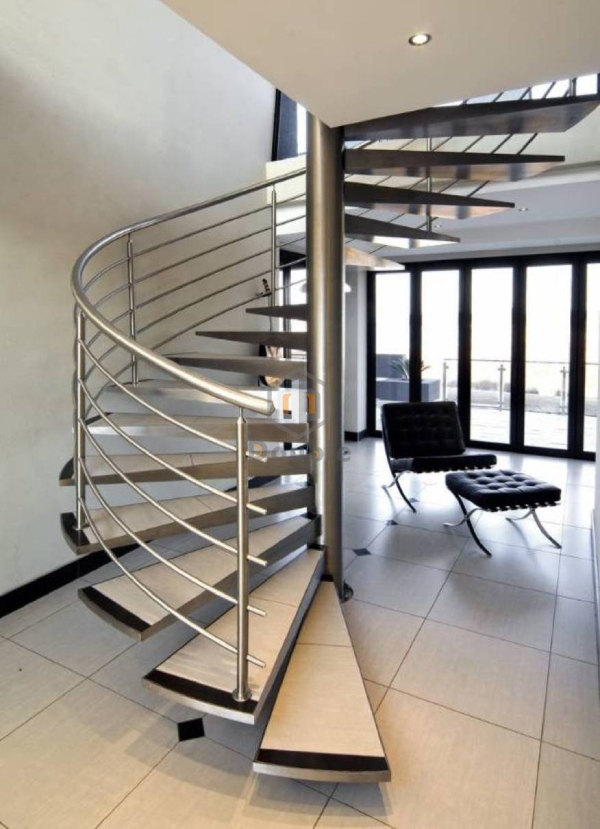
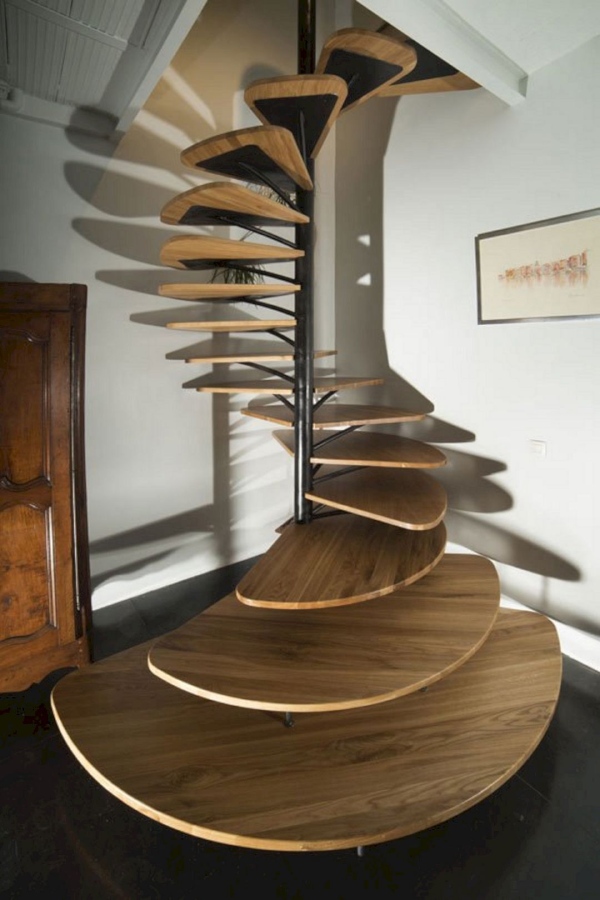
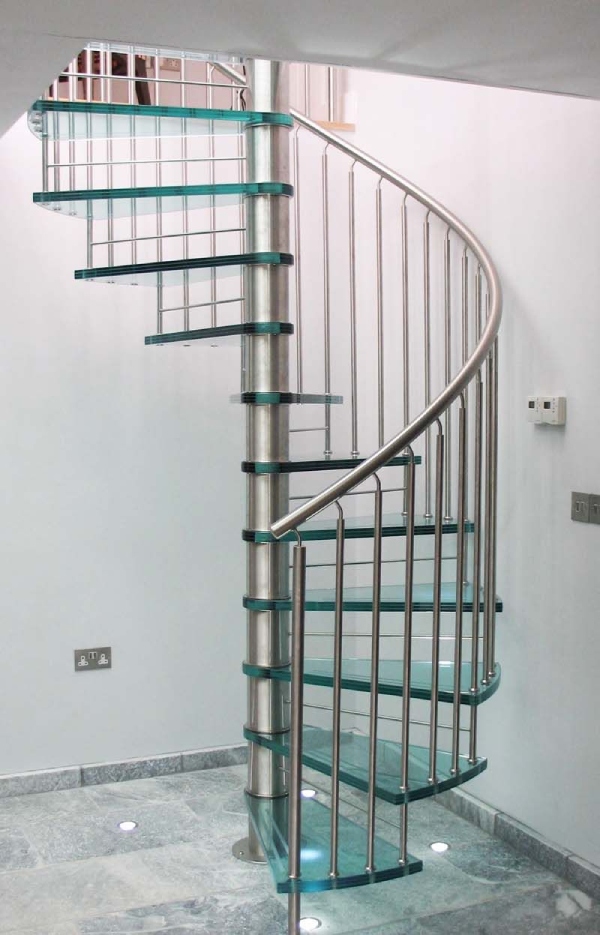

Although a spiral staircase may seem fascinating and interesting by its looks, the question that arises is, are spiral staircases a good option for your house? Is it a safe alternative?
To answer your questions, let us look at some more information about the advantages and disadvantages of a spiral staircase.
Advantages of Spiral Staircase
01. Spiral staircases use less space as they have a small footprint.
02. They have a versatile, impressive, and eye-catching look.
03. You can customize a spiral staircase as per your wish by using the appropriate materials.
04. A spiral staircase adds value to your house.
05. They are proven to be the best secondary stair option.
Disadvantages of Spiral Staircase
01. Spiral Staircase is bit less comfortable compared to straight stair due to unique width of trader. They are not comfortable for movement in both direction, as width of trades is always less near central post
02. If appropriate material is not used, it might prove dangerous, and fear of falling down persists.
03. They are steeper compared to other staircases, but you can provide large diameter of staircase for your comfort.
04. Spiral staircase proves to be difficult for user of elders.
05. It is difficult to move furniture or large heavy objects between the floors through spiral staircase.
06. They are difficult to install and needs skilled labors.
07. They are not convenient, when traffic is high.
08. Unless the design is simple, they are costly.
After knowing various advantages and disadvantages of spiral staircase, you might have found the answer to your question whether it proves to be a good option or not. And if you are thinking to opt it in your house, gharpedia is here to help you out by providing design factors to be kept in mind while designing your spiral staircase.
Design Factors of Spiral Staircase
The design factors of spiral staircases with their standard dimensions, as per the Time Saver Standards for Interior Design and Space Planning[206], are listed below:
01. Location of Spiral Staircase
The foremost factor to be kept in mind is the location of the spiral staircase. The reason behind selecting the location first is so that you don’t end up installing a wooden spiral staircase outside your house rather than indoors. Thus, think wisely and carefully about the location and use the appropriate material for the construction of your spiral staircase.
02. Diameter of Spiral Staircase
Select the diameter of the spiral staircase according to your comfort and the availability of space. A spiral staircase is generally 42 inches – 72 inches (1070mm – 1830mm) in diameter. The minimum diameter of a spiral staircase for general access purposes is 48 inches (1220mm), whereas a spiral staircase with a diameter of 60 inches (1520mm) provides comfortable access between floors. You can use a spiral staircase with a larger diameter for elegant aesthetic purposes. Here, it is mandatory to note that the diameter of a well-finished opening should be at least 2 inches (50mm) greater than the diameter of the spiral staircase.
03. Spiral Stair Tread Designs
Select the appropriate type of treads depending on the kind of look you want for your staircase. Spiral staircases are generally constructed with 12 to 16 treads to the circle. Apart from materials like wood, metal, stone, and glass, spiral staircases can be equipped with several types and designs of treads as shown below:
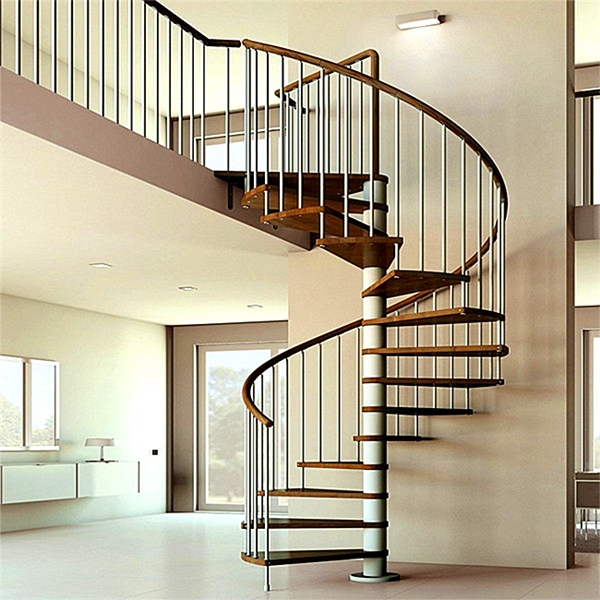

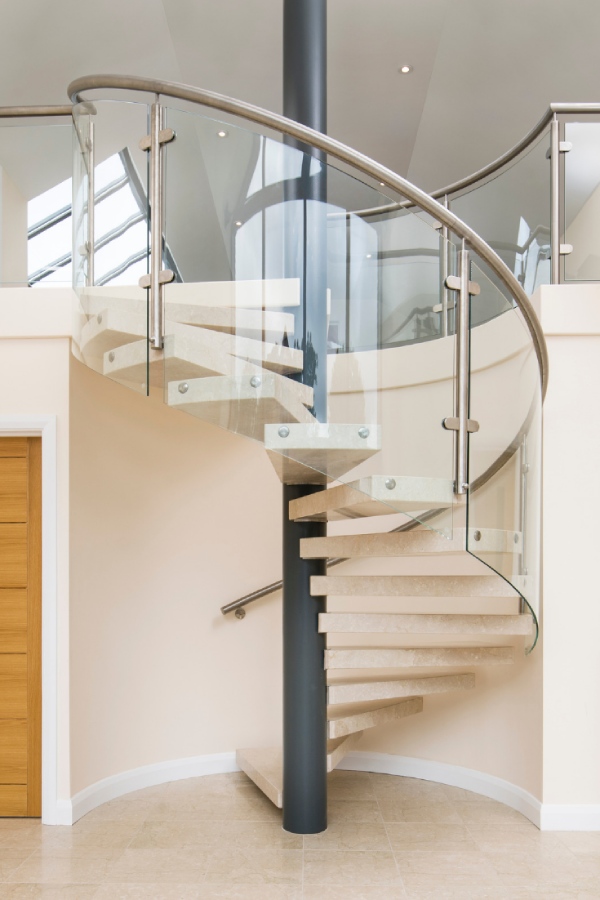
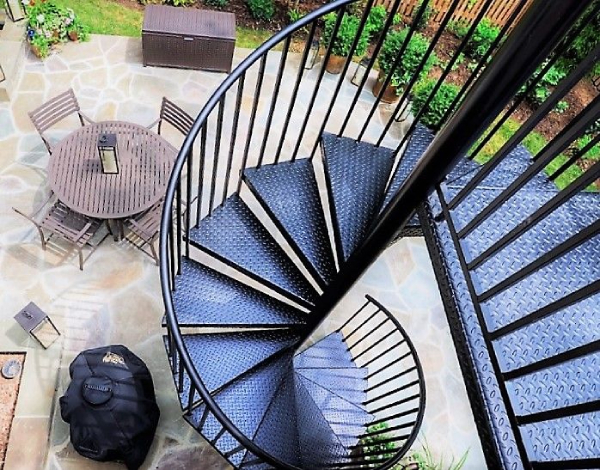

04. Spiral Stair Riser Heights
The riser heights for various tread angles of a spiral staircase are shown below:
| Tread Angle | Minimum Height of Risers | Treads per full circle |
| 30° | 8 15/16 inches (230mm ) | 12 |
| 27° | 8 inches (200mm) | 13 = 351° |
| 24 ½° | 7 5/16 inches(185mm) | 15 = 367 ½° |
| 22 ½° | 6 11/16 inches (170mm) | 16 |
05. Spiral Stair Headroom
The headroom of a spiral staircase should always be calculated on the basis of three-fourths of a circle. On a circle with 12 treads, the rise would be approximately 9” (230mm) and the headroom would be 6’9” (2050mm). Whereas, for a circle with 16 treads rise of 7” (180mm) in a spiral staircase would provide headroom of 7’ (2130mm).
We hope that all the information given in this article will help clear any doubts about the spiral staircase that you might have had. We hope that the advantages and disadvantages mentioned above will help you make a decision as to what kind of staircase would best suit your needs.
Image Courtesy: Image 2, Image 3, Image 5, Image 7, Image 8, Image 9 – rarewoodsusa, Image 19, Image 20, Image 21, Image 22, Image 23, Image 24, Image 25 – vrogue, Image 27, Image 28, Image 29, Image 30, Image 31, Image 32, Image 33 – buyrailings, Image 34, Image 35, Image 36, Image 37, Image 38, Image 39, Image 40, Image 41, Image 42, Image 43, Image 44, Image 45, Image 46, Image 48 – sdmetalworks, Image 49, Image 50 – caststairs, Image 52, Image 53, Image 54, Image 55, Image 56, Image 57, Image 58, Image 59, Image 60, Image 61, Image 62, Image 63, Image 64, Image 65, Image 66



